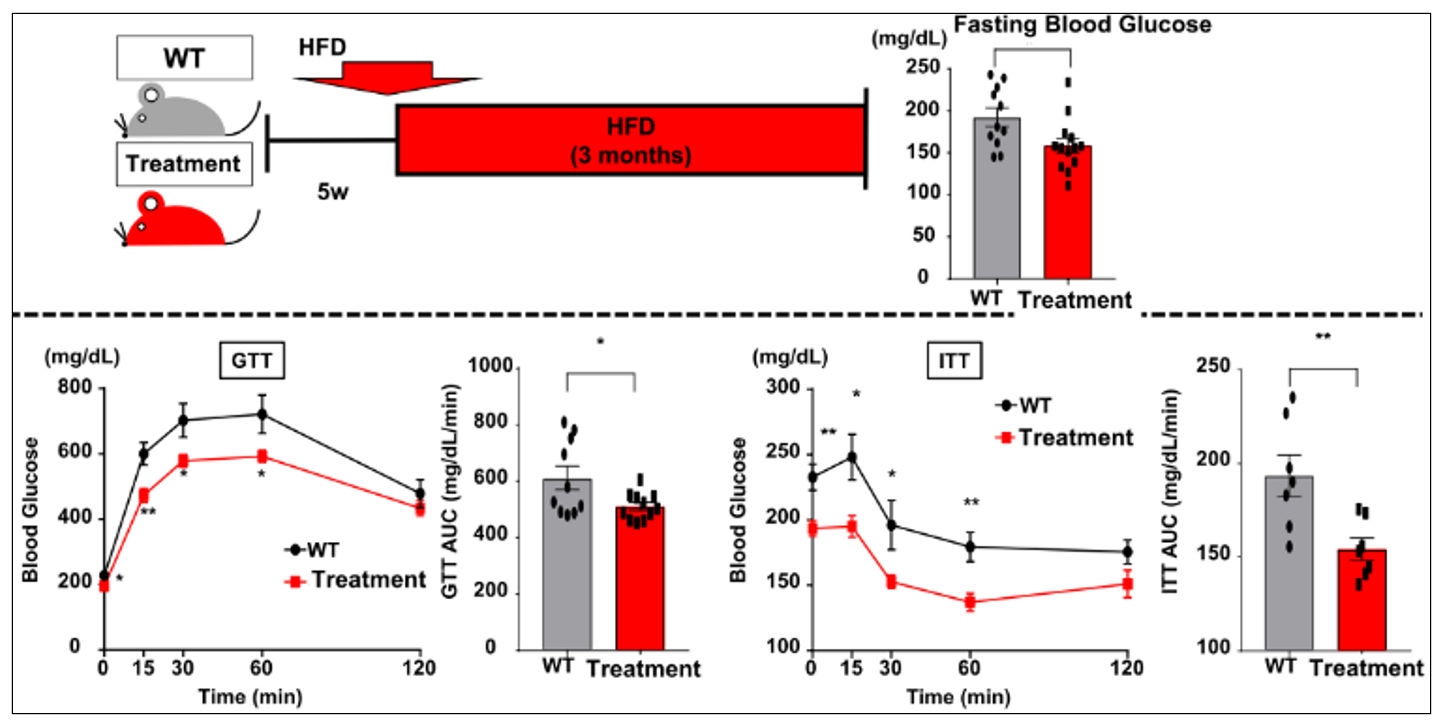Advantages
- Endogenous secreted protein SerpinA1 (also known as alpha-1 antitrypsin) activates brown adipocytes and promotes the differentiation of white adipocytes into beige adipocytes (a.k.a. beige-ization).
- SerpinA1 has been used in clinical applications for the treatment of other diseases.
- Based on the target mechanism, there is a possibility of developing small molecule compounds that can replace SerpinA1.
Technology Overview & Background
Obesity and type 2 diabetes are caused by adipocyte insulin resistance, which underlies the age-related regression of energy-consuming brown fat. The researcher discovered a phenomenon in which brown fat atrophies in IR/IGF1R-inducible DKO mice (published in 2017) in which insulin signals are not transduced at all, but then recovers.
Inspired by this, he analyzed factors involved in brown adipocyte regeneration by serum proteomics and identified secretory proteins. SerpinA1 was found to promote brown adipocyte activation and white adipocyte beige-ization through the activation of adipocyte mitochondria. It was also suggested that SerpinA1 acts on adipocytes via receptors.
SerpinA1 has been clinically applied as a therapeutic agent for alpha-1 antitrypsin deficiency caused by mutations in the SERPINA1 gene, and further development of modified forms and others is ongoing.
Data
- In animal experiments using mice, overexpression of the protein resulted in high improvement of glucose tolerance and insulin resistance (upper figure), increased UCP1 in brown adipose tissue (lower figure) and thermogenesis, enhanced beige coloration of white adipocytes, and improved cold tolerance.
- KO mice of the same protein showed impaired glucose tolerance and insulin resistance, and decreased cold tolerance.
 |
 |
Patents
PCT/JP2023/024246 (published internationally in Japanese as WO2024/005157)
Researchers & Academic Institution
Masaji Sakaguchi, MD, PhD (Assistant Professor, Kumamoto University, Japan), et al.
Development Stage
- In animal experiments on mice, the anti-obesity and anti-diabetic effects of overexpression of the protein have already been confirmed.
Expectations
Tech Manage Corp. is now looking for partner companies to collaborate on R&D for practical application of this technology.
Project No: JT-04294


